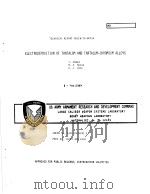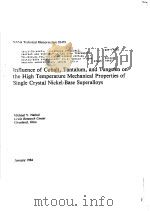《TANTALUM AND NIOBIUM》
| 作者 | G.L.MILLER 编者 |
|---|---|
| 出版 | LONDON BUTTERWORTHS SCIENTIFIC PUBLICATIONS |
| 参考页数 | 767 |
| 出版时间 | 没有确切时间的资料 目录预览 |
| ISBN号 | 无 — 求助条款 |
| PDF编号 | 811538058(仅供预览,未存储实际文件) |
| 求助格式 | 扫描PDF(若分多册发行,每次仅能受理1册) |
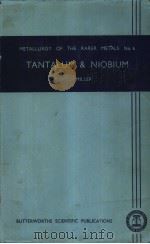
1.HISTORY AND OCCURRENCE1
1.1.History1
1.2.Occurrence2
1.3.Source3
1.4.Concentration10
1.5.Reserves of Tantalum and Niobium11
1.5.1.Nigeria12
1.5.2.Uganda12
1.5.3.Tanganyika12
1.5.4.Norway13
1.5.5.Canada13
1.5.6.Brazil13
2.CONSUMPTION AND USES OF TANTALUM AND NIOBIUM17
2.1.Consumption17
2.2.Uses18
2.2.1.Carbon,low alloy and high chromium steels20
2.2.2.Ferritic type stainless steels20
2.2.3.Austenitic type stainless steels21
2.2.4.High temperature alloys(super-alloys)26
2.2.5.Effect of niobium on nickel-molybdenum alloys28
2.2.6.Effect of niobium on oxidation resistance of some alloys28
2.2.7.Production of ferro-niobium28
2.2.8.Uses of niobium in the welding of stain-less steels31
2.2.9.Inert gas welding electrodes33
2.2.10.Hard metals(cemented carbides)33
2.2.11.Tantalum carbide,silicide and boride for high-temperature applications38
2.2.12.Magnets38
2.2.13.Tantung alloys38
2.2.14.Special alloys40
2.2.15.Catalysts40
2.2.16.Glass40
2.2.17.Metal to ceramic seal41
2.2.18.Chemical equipment41
2.2.19.Spinnerettes43
2.2.20.Electronic applications43
2.2.21.Furnace equipment44
2.2.22.Surgical applications45
2.2.23.Capacitors45
2.2.24.Crucible material59
2.2.25.Nuclear energy developments60
2.2.26.Future high-temperature niobium base alloy materials62
3.EXTRACTION OF TANTALUM AND NIOBIUM FROM THEIR ORES67
3.1.Fusion with Alkaline Fluxes67
3.1.1.Fusion with sodium hydroxide or sodium carbonate67
3.1.2.Fusion with potassium hydroxide or potassium carbonate68
3.1.3.Fusion with a mixture of sodium hydroxide and sodium carbonate69
3.1.4.Fusion with a mixture of sodium car-bonate and sodium nitrate69
3.1.5.Fusion with a mixture of sodium per-oxide and caustic soda70
3.2.Fusion with Acid Fluxes70
3.2.1.Fusion with potassium bisulphate70
3.2.2.Fusion with sodium pyrosulphate71
3.2.3.Fusion with potassium hydrogen fluoride71
3.3.Digestion with Acid Solutions71
3.3.1.Digestion with hydrofluoric acid71
3.3.2.Digestion with hydrofluoric acid and oxalic acid72
3.3.3.Digestion with sulphuric acid73
3.3.4.Digestion with a mixture of sulphuric acid and ammonium sulphate74
3.3.5.Simultaneous decomposition of pyro-chlore and extraction with methyl iso-butyl ketone acidified with hydrofluoric acid74
3.4.Digestion with an Alkaline Solution75
3.4.1.Conversion to ferro-alloy followed by digestion with caustic soda solution75
3.5.Chlorination75
3.5.1.Chlorination of mixed crude carbides75
3.5.2.Chlorination of ferro-alloy77
3.5.3.Recovery of niobium from titanium minerals by chlorination of mineral carbon mixtures80
3.5.4.Chlorination of low grade niobium con-centrates86
4.SEPARATION OF TANTALUM AND NIOBIUM AND THEIR PURIFICATION90
4.1.Separation Involving the Fractional Crystallization of the Potassium Double Fluorides(Marignac Process)90
4.1.1.Tantalum operations at Fansteel Metallurgical Corporation93
4.1.2.Tantalum operations at Siemens&Halske A.G.94
4.1.3.Niobium operations at Siemens&Halske A.G.96
4.1.4.Niobium operations at Fansteel Metallurgical Corporation96
4.2.Separation of Titanium and Tin from Tantalum and Niobium101
4.2.1.Separation by fractional hydrolysis101
4.2.2.Separation by precipitation from hydrogen-peroxide solution101
4.2.3.Separation by selective precipitation with salicylic acid or ammonium salicylate101
4.2.4.Separation by leaching pyrosulphate melts with sulphuric acid containing tannin102
4.2.5.Separation by leaching earth acids with hydrochloric-oxalic acid mixtures102
4.2.6.Separation by the tartaric acid hydrolysis method102
4.2.7.Separation by chlorination with carbon tetrachloride or thionyl chloride103
4.2.8.Separation by selective solution of mixed chlorides in carbon tetrachloride106
4.3.Separation by Miscellaneous Methods Other Than Those Involving the Marignac Method,Chlorination,Ion Exchange or Liquid-Liquid Extraction106
4.3.1.Separation by selective acid extraction of sodium bisulphate fusion107
4.3.2.Separation by hydrolysis of reduced solu-tions107
4.3.3.Separation by selective precipitation with the aid of urea107
4.3.4.Separation by selective reduction of mixed oxides followed by acid digestion108
4.3.5.Separation by electrolysis111
4.3.6.Separation by selective extraction of mixed chlorides by liquid sulphur dioxide or sulphuryl chloride111
4.3.7.Separation by selective precipitation with tannin113
4.3.8.Separation by selective solution of mixed oxides with hydrochloric-oxalic acids113
4.4.Separation by Methods Involving Chlorination114
4.4.1.Separation by direct chlorination114
4.4.2.Separation by selective reduction of oxides followed by chlorination115
4.4.3.Separation by selective nitriding followed by chlorination116
4.4.4.Separation by reduction of mixed chlorides116
4.4.5.Separation by partial reduction of penta-chloride mixtures with aluminium118
4.4.6.Separation by selective reduction of mixed chlorides by hydrogen120
4.4.7.Separation by selective chlorination after partial hydrolysis124
4.4.8.Separation by fractional distillation of mixed chlorides127
4.4.9.Separation by reaction between halides of aluminium and mixed oxides128
4.5.Separation by Ion Exchange129
4.5.1.Separation using Dowex-1 and hydro-chloric-hydrofluoric acids129
4.5.2.Separation using Dowex-2 and oxalic acid130
4.5.3.Separation using Deacidite-FF and hydro-chloric-hydrofluoric acids131
4.5.4.Separation using Dowex-2 and hydro-chloric acid131
4.5.5.Separation using Dowex-1 and hydro-chloric-hydrofluoric acids131
4.6.Separation by Chromatographic Adsorption133
4.6.1.Determination of total tantalum and nio-bium in presence of activated cellulose133
4.6.2.Separation of tantalum and niobium in presence of activated cellulose134
4.6.3.Separation of tantalum and niobium in presence of activated alumina136
4.7.Separation by Liquid-Liquid Extraction136
4.7.1.Methyl ethyl ketone-hydrofluoric acid system137
4.7.2.Methyl-dioctyamine/xylene-hydrochloric acid system138
4.7.3.Tribenzylamine/chloroform or methylene chloride-hydrochloric or sulphuric acid system139
4.7.4.Di-isopropyl-mineral acid systems141
4.7.5.Butyl phosphoric acid/n-butyl ether-nitric and oxalic acids systems142
4.7.6.Di-isobutylcarbinol-mineral acid systems143
4.7.7.Investigation into industrial application of liquid-liquid extraction145
4.7.8.Methyl isobutyl ketone-hydrofluoric-nitric acid systems applied to low-grade concentrates159
4.7.9.Methyl isobutyl ketone-hydrofluoric acid with hydrochloric,nitric or sulphuric acid161
4.7.10.Methyl isobutyl ketone-hydrofluoric acid system applied to columbite164
4.7.11.Methyl isobutyl ketone-hydrofluoric acid system with addition of sulphuric acid168
4.7.12.Tributyl phosphate-hydrofluoric-nitric acid or sulphuric acid systems171
4.7.13.Simultaneous decomposition of pyro-chlore and extraction with methyl iso-butyl ketone acidified with hydro-fluoric acid173
5.PRODUCTION OF TANTALUM AND NIOBIUM179
5.1.Reduction of Oxides181
5.1.1.Reduction with carbon181
5.1.2.Reduction with hydrogen188
5.1.3.Reduction with magnesium189
5.1.4.Reduction with calcium190
5.1.5.Reduction with aluminium193
5.1.6.Reduction with mischmetall194
5.1.7.Reduction with silicon195
5.2.Reduction of Halides196
5.2.1.Reduction of potassium or sodium double fluoride salts196
5.2.2.Reduction of tantalum and niobium chlorides201
5.3.Thermal Dissociation207
5.3.1.Thermal dissociation of halides207
5.3.2.Coating metals with tantalum or niobium210
5.4.Electrowinning211
5.4.1.Operations at Fansteel Metallurgical Corporation211
5.4.2.Bath composition216
5.4.3.Effect of bath composition on particle size218
5.4.4.Effect of temperature and current density on particle size218
5.4.5.Gases evolved during electrolysis220
5.4.6.Decomposition potential222
5.4.7.Crucible materials222
5.4.8.Leaching the metal deposit224
5.4.9.Anode effect226
5.4.10.Volatility of potassium tantalum fluoride226
5.4.11.Function of potassium tantalum fluoride227
5.4.12.Other methods of electrowinning228
5.5.Comparison of Tantalum Produced by Sodium Reduction and Electrowinning234
5.6.Electroplating Niobium and Tantalum on Other Metals239
6.CONSOLIDATION244
6.1.Consolidation by Powder Metallurgy245
6.1.1.Tantalum operations at Siemens&Halske A.G.245
6.1.2.Tantalum operations at Fansteel Metal-lurgical Corporation249
6.1.3.Tantalum operations at Murex Limited250
6.1.4.Laboratory investigations of the sintering of tantalum powder253
6.1.5.Niobium operations at Fansteel Metallurgical Corporation266
6.1.6.Niobium sintering in the United Kingdom267
6.1.7.Reactions during vacuum sintering of tantalum and niobium277
6.1.8.Summary of sintering practices for tantalum and niobium292
6.2.Purification of Consolidated Niobium or Tantalum295
6.2.1.Floating-zone melting295
6.2.2.Cage melting300
6.3.Electron Beam Melting300
6.3.1.Laboratory furnace300
6.3.2.Commercial application303
6.3.3.Purification of niobium305
6.4.Arc-Melting Tantalum and Niobium306
6.4.1.Development of the arc-melting technique306
6.4.2.Removal of impurities during arc melting309
6.4.3.Arc-melting purified metal313
7.FABRICATION318
7.1.Work Hardening318
7.2.Annealing318
7.3.Forging322
7.4.Sheet Rolling322
7.5.Rod Rolling and Swaging323
7.6.Wire Drawing323
7.7.Tube Production324
7.8.Press-work324
7.9.Spinning324
7.10.Machining326
7.10.1.Turning326
7.10.2.Screw cutting326
7.10.3.Drilling327
7.10.4.Grinding327
7.10.5.Shaping and Milling327
7.10.6.Polishing328
7.11.Riveting329
7.12.Welding329
7.12.1.Inert gas arc welding330
7.12.2.Resistance welding335
7.12.3.Carbon arc welding339
7.12.4.Electronic welding339
7.13.Brazing and Soldering341
7.14.Electroplating Other Metals on Niobium342
7.15.Scrap Recovery344
8.PHYSICAL AND STRUCTURAL PROPERTIES346
8.1.Mass346
8.1.1.Density346
8.2.Thermal Properties346
8.2.1.Melting point346
8.2.2.Boiling point346
8.2.3.Vapour pressure346
8.2.4.Thermal expansion348
8.2.5.Thermal conductivity352
8.2.6.Specific heat354
8.2.7.Heat capacity356
8.2.8.Entropy357
8.2.9.Latent heat of fusion358
8.2.10.Latent heat of vaporization358
8.2.11.Heat of combustion358
8.3.Electrical Properties358
8.3.1.Volume conductivity358
8.3.2.Electrlcal resistivity358
8.3.3.Temperature coefficient of resistivity361
8.3.4.Superconductivity361
8.3.5.Thermoelectric power362
8.3.6.Electrochemical equivalent366
8.3.7.Standard electrode potential366
8.4.Magnetic Properties366
8.4.1.Magnetic susceptibility366
8.4.2.Hall effect369
8.5.Optical,Thermionic and Electronic Properties370
8.5.1.Spectral emissivity370
8.5.2.Total emissivity370
8.5.3.Total radiation371
8.5.4.Line spectra371
8.5.5.Refractive index371
8.5.6.Ionization potential371
8.5.7.Electron emission371
8.5.8.Work function372
8.5.9.Secondary emission372
8.5.10.Positive ion emission372
8.5.11.Radiation capacity372
8.5.12.Electronic configuration372
8.6.Crystallographic Data372
8.6.1.Structure type372
8.6.2.Lattice constant373
8.6.3.Schonflies space group373
8.6.4.Interatomic distance373
8.7.Deformation Mechanisms,Recrystallization,Grain Growth and Preferred Orientation373
8.7.1.Deformation mechanisms373
8.7.2.Recrystallization and grain growth380
8.7.3.Preferred orientation384
8.8.Atomic and Nuclear Properties385
8.8.1.Atomic properties385
8.8.2.Neutron data385
8.8.3.Isotopes387
8.9.χ-ray Data391
8.9.1.χ-ray spectra391
9.MECHANICAL PROPERTIES396
9.1.Elastic Properties396
9.1.1.Modulus of elasticity396
9.1.2.Longitudinal wave velocity396
9.1.3.Shear wave velocity396
9.1.4.Wave vibration frequency397
9.1.5.Shear modulus398
9.1.6.Poisson's ratio398
9.2.Tensile Properties398
9.2.1.Effect of temperature398
9.2.2.Effect of rolling direction403
9.2.3.Effect of strain rate on the room tempera-ture properties406
9.2.4.Effect of oxygen,nitrogen and hydrogen407
9.2.5.Effect of annealing407
9.2.6.Effect of alloying408
9.2.7.Effect of pressure410
9.2.8.Effect of recrystallization temperature412
9.2.9.Effect of neutron irradiation412
9.2.10.Variation of properties with method of production415
9.2.11.Impact properties416
9.2.12.Brittle-to-ductile transition temperature416
9.3.Hardness417
9.3.1.Effect of annealing temperature417
9.3.2.Effect of cold working420
9.3.3.Effect of temperature422
9.3.4.Effect of oxygen,nitrogen and hydrogen422
9.4.Fatigue422
9.5.Creep425
9.6.Compressibility427
10.CORROSION BY CHEMICALS,GASES AND LIQUID METALS431
10.1.Chemical Corrosion431
10.1.1.Tantalum-general431
10.1.2.Niobium—general432
10.1.3.Comparison between niobium and tanta-lum and corrosion resistance of niobium and tantalum alloys433
10.1.4.Embrittlement of niobium by alkalis439
10.1.5.Embrittlement of tantalum in uranyl sulphate solution439
10.1.6.Reaction of niobium with water439
10.1.7.Reaction of tantalum with steam440
10.1.8.Electrochemical behaviour and properties of oxide films440
10.2.Reactions with Gases445
10.2.1.Hydrogen with tantalum445
10.2.2.Hydrogen with niobium458
10.2.3.Nitrogen with tantalum466
10.2.4.Nitrogen with niobium475
10.2.5.Oxygen with tantalum486
10.2.6.Oxygen with niobium499
10.2.7.Carbon dioxide with tantalum and niobium515
10.2.8.Protection of niobium and tantalum against oxidation515
10.2.9.Behaviour of refractory oxides in contact with niobium at elevated temperatures531
10.3.Corrosion by Liquid Metals533
10.3.1.Bismuth with tantalum533
10.3.2.Bismuth with niobium533
10.3.3.Lead with tantalum534
10.3.4.Lead with niobium534
10.3.5.Lithium with tantalum and niobium535
10.3.6.Mercury with tantalum and niobium535
10.3.7.Potassium and potassium-sodium allors with tantalum535
10.3.8.Potassium and potassium-sodium alloys with niobium535
10.3.9.Sodium with tantalum535
10.3.10.Sodium with niobium536
10.3.11.Thallium with tantalum and niobium536
10.3.12.Tin with tantalum536
10.3.13.Tin with niobium536
10.3.14.Uranium with tantalum536
10.3.15.Uranium with niobium536
10.3.16.Zinc with tantalum537
10.3.17.Zinc with niobium537
11.BINARY ALLOY SYSTEMS544
11.1.Theoretical Considerations544
11.1.1.Predicted behaviour546
11.1.2.Other considerations547
11.2.Binary Systems548
11.2.1.Aluminium alloys548
11.2.2.Arsenic alloys550
11.2.3.Beryllium alloys550
11.2.4.Boron alloys550
11.2.5.Carbon alloys555
11.2.6.Chromium alloys558
11.2.7.Cobalt alloys561
11.2.8.Copper alloys566
11.2.9.Gallium alloys567
11.2.10.Germanium alloys567
11.2.11.Gold alloys567
11.2.12.Hafnium alloys567
11.2.13.Hydrogen alloys569
11.2.14.Iridium alloys578
11.2.15.Iron alloys579
11.2.16.Lead alloys585
11.2.17.Manganese alloys586
11.2.18.Molybdenum alloys586
11.2.19.Nickel alloys590
11.2.20.Nitrogen alloys592
11.2.21.Osmium alloys598
11.2.22.Oxygen alloys600
11.2.23.Palladium alloys620
11.2.24.Phosphorus alloys620
11.2.25.Platinum alloys622
11.2.26.Potassium alloys623
11.2.27.Rhenium alloys623
11.2.28.Rhodium alloys626
11.2.29.Ruthenium alloys627
11.2.30.Silicon alloys627
11.2.31.Silver alloys632
11.2.32.Sodium alloys632
11.2.33.Sulphur alloys633
11.2.34.Tantalum-niobium635
11.2.35.Thorium alloys637
11.2.36.Tin alloys638
11.2.37.Titanium alloys639
11.2.38.Tungsten alloys642
11.2.39.Uranium alloys647
11.2.40.Vanadium alloys653
11.2.41.Zinc alloys657
11.2.42.Zirconium alloys657
12.SOME COMPOUNDS OF NIOBIUM AND TANTALUM671
12.1.Nitrogen Compounds671
12.1.1.Production of niobium nitride671
12.1.2.Production of tantalum nitride673
12.1.3.Properties of niobium nitride673
12.1.4.Properties of tantalum nitride675
12.1.5.Binary systems of nitrides and carbides of niobium,zirconium,titanium and vanadium675
12.2.Carbon Compounds676
12.2.1.Production of niobium carbide676
12.2.2.Production of tantalum carbide677
12.2.3.Properties of niobium carbide,NbC681
12.2.4.Properties of tantalum carbide682
12.2.5.Applications683
12.2.6.Sintering tantalum carbide684
12.2.7.Systems involving niobium and tantalum carbides684
12.3.Silicon Compounds686
12.3.1.Production of niobium silicide686
12.3.2.Production of tantalum silicide687
12.3.3.Properties of niobium silicides688
12.3.4.Properties of tantalum silicides688
12.3.5.Systems involving niobium and tantalum silicides690
12.4.Boron Compounds691
12.4.1.Production of niobium boride691
12.4.2.Production of tantalum boride695
12.4.3.Properties of niobium boride695
12.4.4.Properties of tantalum boride697
12.4.5.Tantalum-niobium-carbon-boron systems698
12.4.6.Mutual solubilities of metal diborides699
APPENDIX Ⅰ.CHEMICAL ANALYSIS706
Ⅰ.1.Historical706
Ⅰ.2.Methods of Analysis707
Ⅰ.2.1.Estimation of mixed pentoxides707
Ⅰ.2.2.Separate estimation of tantalum and niobium709
APPENDIX Ⅱ.METALLOGRAPHIC TECHNIQUES FOR TANTA-LUM AND ITS ALLOYS717
Ⅱ.1.Metallographic Preparation717
Ⅱ.1.1.By abrasion polishing717
Ⅱ.1.2.By chemical polishing(bright dip)719
Ⅱ.1.3.By electropolishing720
Ⅱ.2.Etching721
Ⅱ.3.Miscellaneous728
Ⅱ.4.Anodic Oxidation728
APPENDIX Ⅲ.SELECTED THERMODYNAMIC DATA FOR SOME COMPOUNDS OF TANTALUM AND NIOBIUM730
Ⅲ.1.Diffusion730
Ⅲ.2.Heat and Free Energy of Formation732
Ⅲ.2.1.Tantalum and niobium oxides732
Ⅲ.2.2.Tantalum and niobium borides733
Ⅲ.2.3.Tantalum and niobium carbides734
Ⅲ.2.4.Tantalum and niobium nitrides734
Ⅲ.2.5.Tantalum and niobium silicides735
Ⅲ.2.6.Tantalum and niobium halides735
Ⅲ.3.Fusion and Vaporization Data for Tantalum and Niobium Halides736
Ⅲ.4.Heat Contents and Entropies737
Ⅲ.4.1.Tantalum and niobium oxides737
Ⅲ.4.2.Tantalum and niobium halides738
Ⅲ.5.Miscellaneous Data on Reduction of Nb2O5738
Ⅲ.5.1.Carbon739
Ⅲ.5.2.Aluminium739
Ⅲ.5.3.Silicon739
AUTHOR INDEX741
SUBJECT INDEX—TANTALUM751
SUBJECT INDEX—NIOBIUM759
《TANTALUM AND NIOBIUM》由于是年代较久的资料都绝版了,几乎不可能购买到实物。如果大家为了学习确实需要,可向博主求助其电子版PDF文件(由G.L.MILLER LONDON BUTTERWORTHS SCIENTIFIC PUBLICATIONS 出版的版本) 。对合法合规的求助,我会当即受理并将下载地址发送给你。
高度相关资料
-
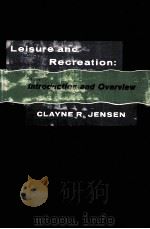
- LEISURE AND RECREATION:INTRODUCTION AND OVERVIEW
- 1977 LEA & FEBIGER
-
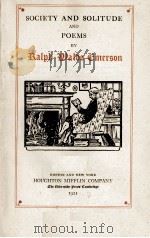
- SOCIETY AND SOLITUDE AND POEMS
- 1921 BOSTON AND NEW YORK HOUGHTON MIFFLIN COMPANY
-

- NATURE ADDRESSES AND LECTURES AND LETTERS AND SOCIAL AIMS
- 1921 BOSTON AND NEW YORK HOUGHTON MIFFLIN COMPANY
-

- QUO VADIS?
- 1952 J. M. DENT & SONS LTD
-

- Martin and Malcolm and American
- 1991 MARMA
-
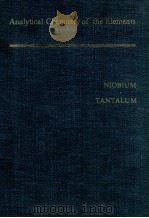
- ANALYTICAL CHEMISTRY OF THE ELEMENTS NIBIUM TANTALUM
- 1970 ANN ARBOR-HUMPHREY SCIENCE PUBLISHERS
-

- SOCIOLOGY AND HISTORY:THEORY AND RESEARCH
- 1964 THE FREE PRESS OF GLENCOE
-
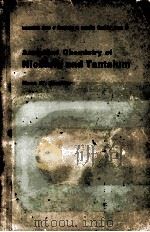
- ANALYTICAL CHEMISTRY OF NIOBIUM AND TANTALUM
- 1964 PERGAMON PRESS
-

- NIOBIUM PROCEEDINGS OF THE INTERNATIONAL SYMPOSIUM
- 1981 TECHNOLOGY OF METALLURGY SERIES
-
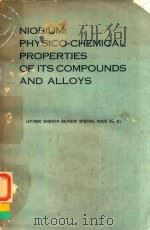
- NIOBIUM: PHYSICO-CHEMICAL PROPERTIES OF ITS COMPOUNDS AND ALLOYS
- 1968 INTERNATIONAL ATOMIC ENERGY AGENCY
-
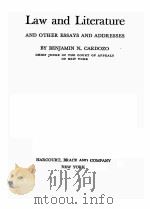
- LAW AND LITERATURE AND OTHER ESSAYS AND ADDRESSES
- 1986 FRED B.ROTHMAN & CO.
提示:百度云已更名为百度网盘(百度盘),天翼云盘、微盘下载地址……暂未提供。➥ PDF文字可复制化或转WORD

